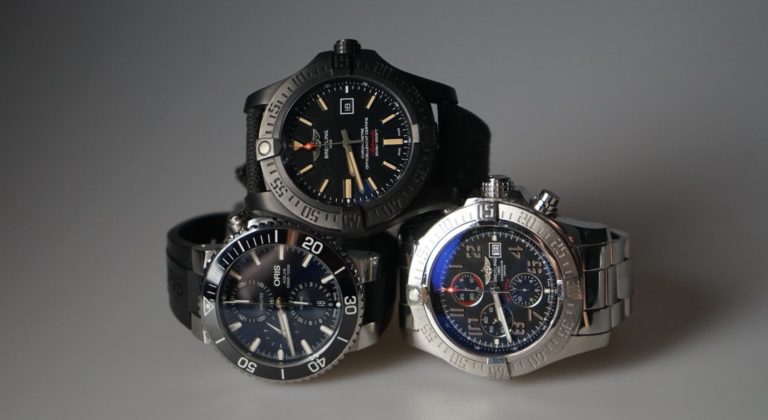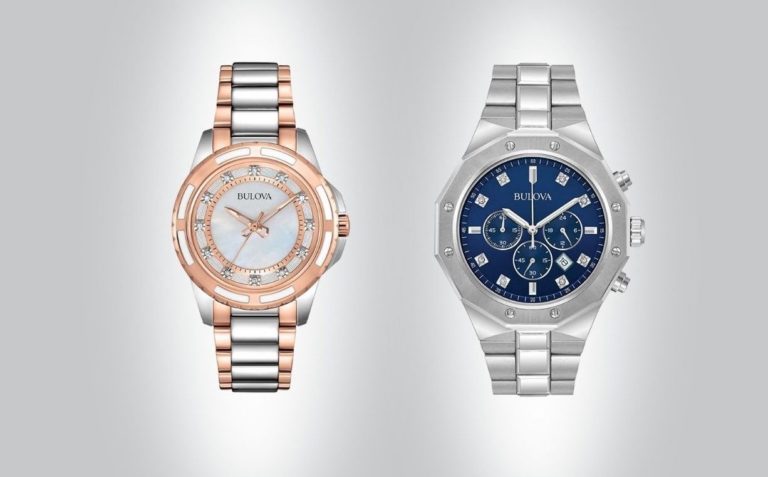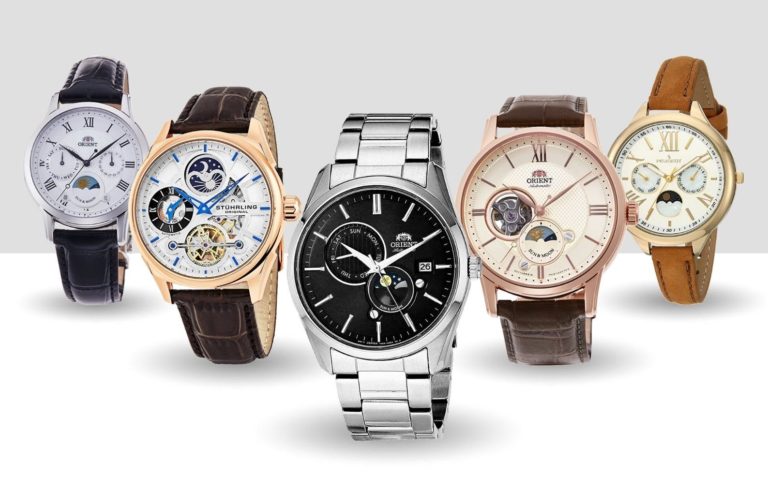Affiliate Disclosure: As an Amazon Associate I earn from qualifying purchases. Details
As you may have noticed, watches come with all sorts of bezels. There are bezels that are colorful and ornamented, and there are also bezels that come with numbers and letters. Some can even be turned either in one or both directions.
The truth is that watch bezels don’t exist just for aesthetic reasons – they have a practical purpose, too.
In order for you to not miss out on any of them, we will discuss 12 types of watch bezels and explain how to read them!
Therefore, bear with us in discovering these beautiful and handy watch parts.
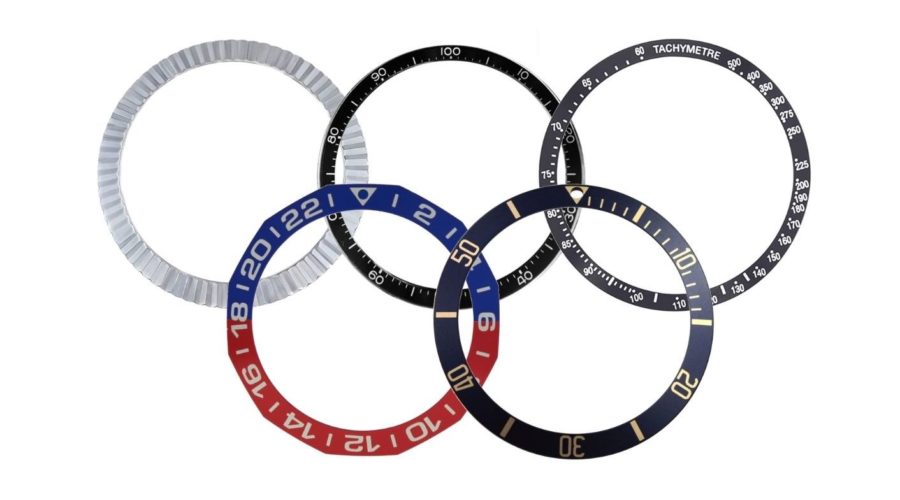
What is a Bezel on a Watch?
But first off, what exactly is a watch bezel?
The bezel is the ring that surrounds the watch face. First and foremost, it is used to fix the watch crystal securely to the case. However, since it is already there, why not use it for other practical purposes?!
That’s why watch manufacturers have come up with various ideas and design solutions over the decades on exploiting the bezel as much as possible.
Enter the twelve different watch bezel types!
Types of Watch Bezels
TYPE OF BEZEL | HOW IT LOOKS LIKE | WHAT IT DOES | AVAILABILITY |
Plain bezel | Stationary with no markings | Secures crystal to the case | Very high |
Fluted bezel | With grooves and ridges | Secures crystal to the case | Low |
Dive bezel | Numbers from 0 to 60 in tens | Counts elapsed time underwater | Very high |
Countdown bezel | Numbers from 60 to 0 in tens | Counts remaining time to an event | Low |
Tachymeter bezel | Numbers from 60 to 400-600 | Measures speed and distance | High |
Slide rule bezel | Numerous small numbers and markers | Various calculations and conversions | Medium |
GMT bezel | Numbers from 1 to 24 | Provides dual time tracking | Medium |
Compass bezel | N, S, E, W marks/0-360 degrees | Determines directions | Medium |
Yacht-timer bezel | Countdown scale from 60 to 0; additional subdials | Counts down the time for the start of a regatta race | Very low |
Telemeter bezel | Numbers up to 19 with mile/km marking | Measures distance between person and event | Very low |
Pulsometer bezel | Red scale from 30 to 220 | Counts pulse | Low |
Decimal bezel | Numbers from 1 to 100 | Converts time to decimals and percentages | Very low |
1. Plain Bezel
The first type of bezel is the most straightforward and logical out there – the plain bezel.
It doesn’t have any other purpose than to fix the crystal securely to the case and, if the watch designers decide, to look good while doing that. Typically, plain bezels come with the same coloring as the case does and are made from stainless steel.
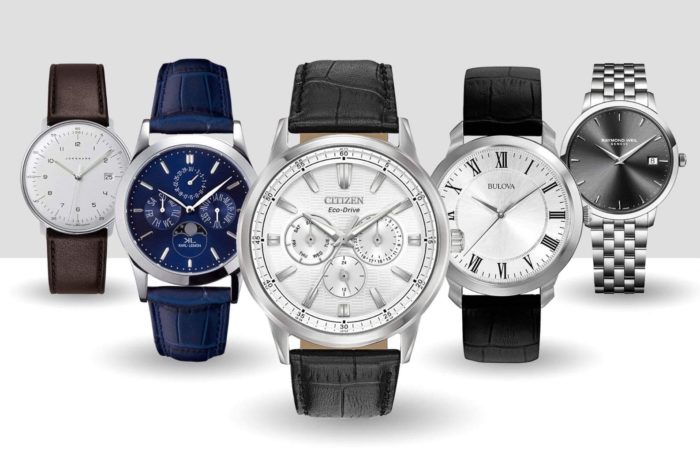
Hence, you will find plain watch bezels mostly from elegant dress watches that are beautiful yet highly discreet in their nature.
2. Fluted Bezel
The fluted bezel is, in its core, similar to the plain bezel for not owing much practical purpose besides securing the crystal to the case. However, it features a distinctive ridged design that has been made world-famous by no other than Rolex itself.
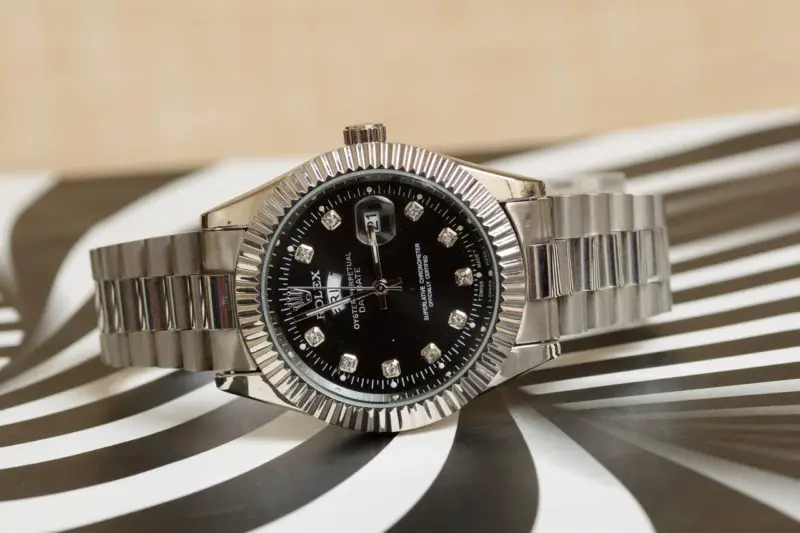
The bezel was originally designed with ridges and grooves to help screw it down to offer extra water resistance. These days, though, the fluted bezel serves only aesthetic purposes.
Besides Rolex, you’ll find fluted bezels from several other brand watches, including Timex and Invicta.
3. Dive Bezel
Probably the most famous watch bezel type is the dive bezel, also known as the count-up bezel.
It is specifically designed for divers, as it can help them calculate how long they have stayed underwater. The dive bezel has markings (usually in tens up to 60 minutes) that indicate the elapsed time, upon which divers can make various decisions and dive-specific calculations.
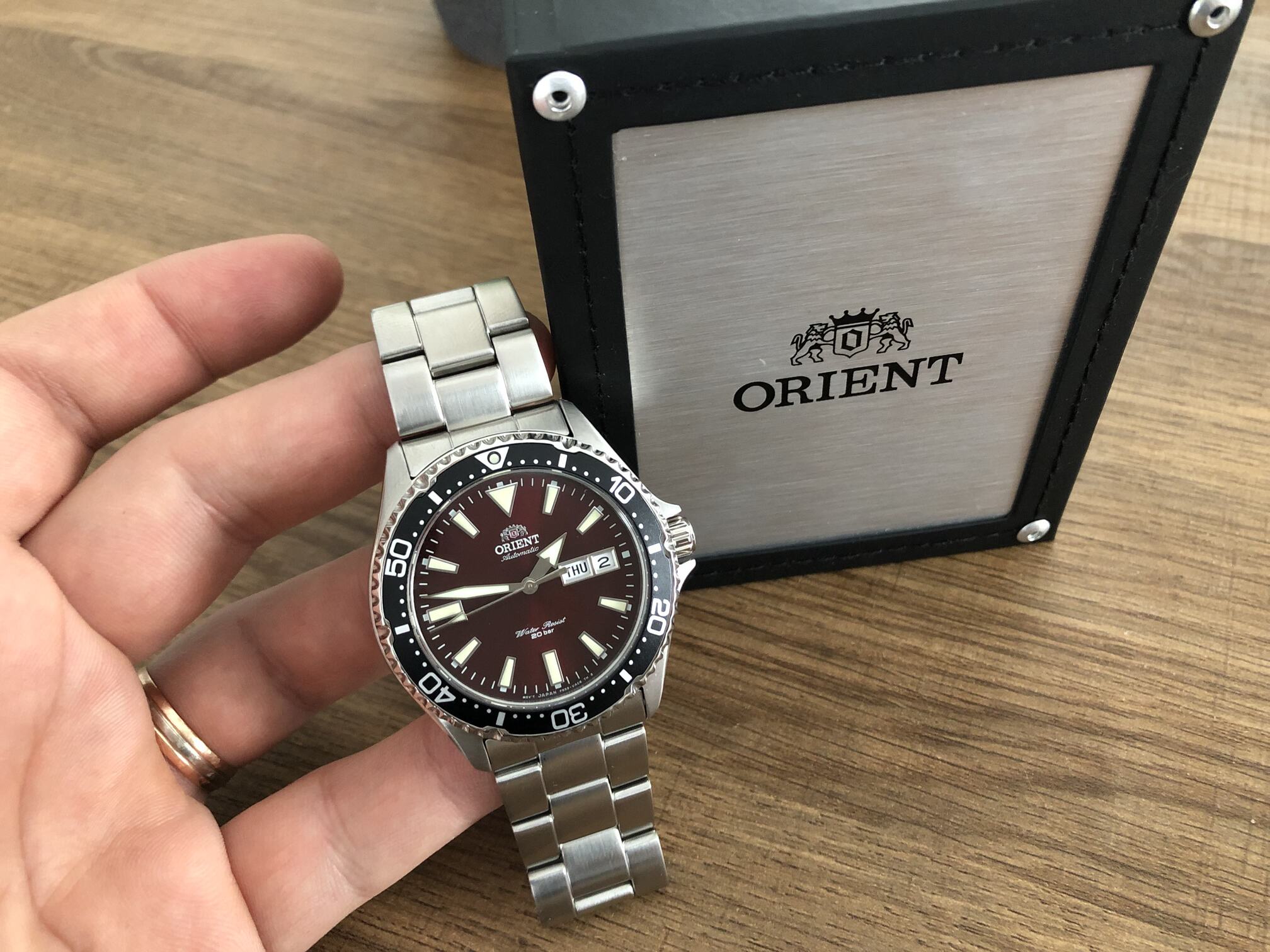
Professional dive bezels turn in one direction (unidirectionally) to not accidentally add to the dive time. Also, when turning the bezel, you can hear firm clicks. In addition, it contains luminous paint at the top (sometimes on the numbers as well) that, along with luminous hour markers and watch hands, help for visibility in the dark.
Most affordable dive watches are equipped with aluminum bezels, but high-end models have swapped them for higher-class ceramic versions.
Dive bezels come in various colors and designs, ranging from simple black and blue to stylish coin-edged and scalloped designs. There are also colorful options, such as the famous red-and-blue Pepsi bezels.
How to use the dive bezel: Align the lume-filled zero marker of the bezel with the minute hand and, when some time has passed, read the elapsed time from the dial.
4. Countdown Bezel
The countdown bezel is very similar to the dive bezel visually, but instead of counting up the elapsed time, this particular bezel counts down the time.
For example, you can use it as a countdown to a specific event, such as the start of your favorite TV show or a football match.
The bidirectional bezel has markings that indicate the amount of time remaining before the event occurs. Compared to the dive bezel, the countdown version comes with reverse numbers, i.e., starting with higher numbers when reading clockwise.
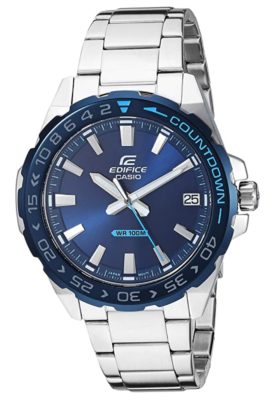
The number of watches with this type of bezel is unfortunately limited. However, there are some Casio Edifice models that have it, and also some military-purpose Sinn watches.
How to use the countdown bezel: Align the time remaining until the start of the event on the bezel with the minute hand and wait until it counts down to zero.
5. Tachymeter Bezel
The fifth type of watch bezel is the tachymeter bezel. Along with the dive bezel, it is one of the most popular bezel currently available. It is found on sports watches, particularly on racing timepieces.
The tachymeter ring is always fixed to the case and has markings that run from 60 up to 400-600. These are units that help calculate speed and distance when used together with the chronograph function. Since the numbers alone on the bezel don’t mean anything, tachymeter watches are always paired with a chronograph.
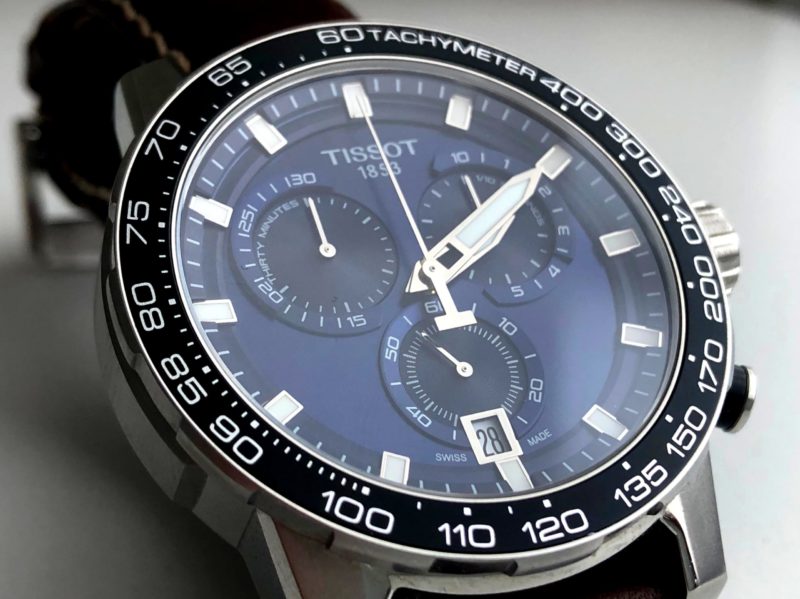
One particular characteristic of tachymeter watches is that the watch’s seconds run on one of the subdials, while the stopwatch’s seconds can be found from the main dial (central seconds). This setting is vital as the stopwatch’s seconds are used for the calculations.
How to use the tachymeter bezel: For measuring the speed you are traveling, start the stopwatch from the start of a mile (or a kilometer) and stop the timing when the distance is covered. Then read the number on a bezel that the timer’s hand indicates. For example, if it took 40 seconds to cover a mile, the scale on the bezel indicates 90 – it means you traveled at a speed of 90 mph.
For measuring distance, you need to know the speed you are traveling. Suppose it is 100mph. Then set off the stopwatch and wait until it hits the 100 mark on the bezel. It means you have traveled exactly one mile.
These are very simplistic examples. If you wish to delve into more complex calculations, see a thorough guide here.
6. Slide Rule Bezel
The slide rule bezel is, by far, the most complicated watch bezel type around. When you look at it, you’ll find countless small markings and numbers that don’t make any sense. However, behind these numbers is a full set of different calculations for pilots, but also some simpler conversions for ordinary people.
Slide rule bezel watches consist of an outer bezel ring and inner bezel ring that are both reversible. It is possible to convert Fahrenheit to Celsius and mph to kph, do multiplications, divisions, square roots, and many more.
The most famous slide rule bezel watch is the Breitling Navitimer. However, if you’re looking for something more accessible, you can check out the Seiko SNA411.
Since describing all the calculations you can do with a slide rule bezel takes huge blocks of text, it is much easier to watch it. Therefore, check out the operation of a slide rule bezel from the following video.
7. GMT Bezel
The GMT bezel is another watch bezel type that Rolex introduced. It was developed for the pilots to read two time zones with a single glance. Today, GMT watches are widely employed by various watch manufacturers at all price points and are not limited to Rolex only.
What a GMT bezel does is that it indicates the second time zone (dual time) on a 24-hour scale. The function requires an additional hand to show the dual time and is typically designed distinctively from regular watch hands. The GMT hand makes the full circle on the dial in 24 hours.
The original GMT watch has a two-tone bezel – the upper half is blue while the lower half is red. The blue indicates the nighttime hours from 6 pm to 6 am, while the red is for the daytime hours from 6 am to 6 pm. However, some GMT bezels come in a single tone or with another color combination.
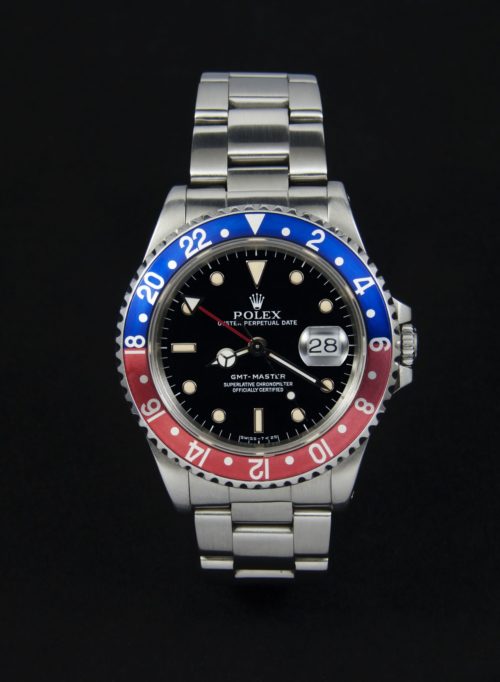
In addition, you’ll come across World Time bezels. These types of bezels offer the same functionality as the GMT versions. However, besides the 1-24 hours, the World Time watches also have the major world cities marked on the bezel in their corresponding time zones.
How to use the GMT bezel: Suppose you live in New York but decide to travel to London, England. The time in London is 5 hours ahead compared to New York. Now, after correcting the time on your watch to show local time in London, set the GMT hand 5 hours behind. For example, if the time in London is 1 pm, the dual time will now show you 8 am.
If not traveling, the GMT hand can indicate the time in a 24-hour format (10 pm and 22.00).
8. Compass Bezel
The compass bezel is as straightforward as it reads – it is a bezel with compass markings.
As you may have already guessed, the compass bezel finds the best use in timepieces meant for hikers, trekkers, and other outdoorsmen.
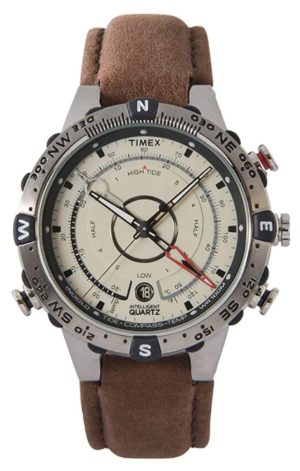
Since compass bezels are neither magnetic nor electronic, there’s only one way to determine the directions – via the sun. Also, there is a distinction between the Northern and Southern Hemisphere.
How to use the compass bezel: Northern Hemisphere – Move the bezel so that the S (South) is between the 12 o’clock mark and the hour hand. Then hold the watch horizontally and point the hour hand to the sun. You’ll have the correct cardinal points.
Southern Hemisphere – Move the bezel so that the N (North) is right between the hour hand and the 12 o’clock mark. Then point the 12 o’clock mark to the sun. Finally, you’ll have the correct cardinal points.
9. Yacht-Timer Bezel
The yacht-timer bezel is a very specific watch bezel type, and not many timepieces have it. Its onliest practical use in yachting and regatta racing.
The purpose of the bezel is to aid sailors to countdown to the start of a sailing race.
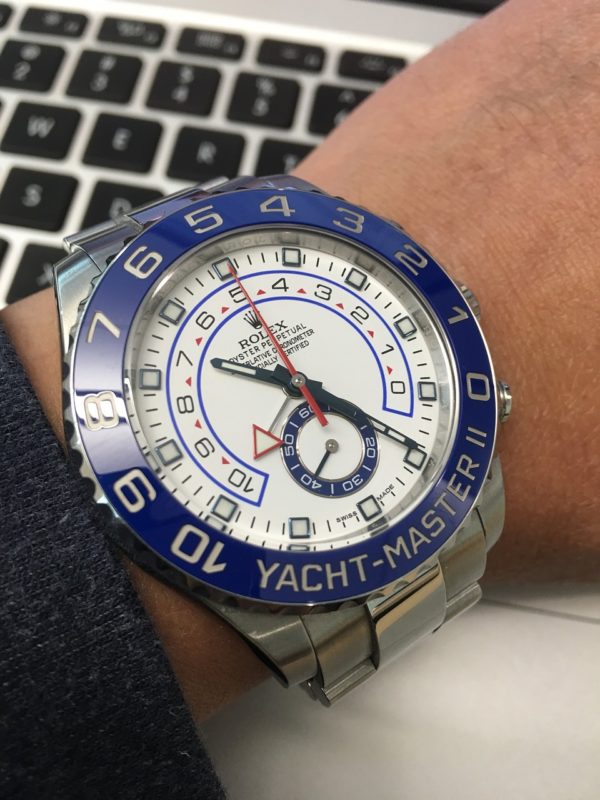
The rules for sailing are different from the rules for races on the ground. So, the sailors have to consider various factors on the water, such as the wind, the working engine, and the fact that the yacht doesn’t pass the starting line too early.
Hence, the purpose of the yacht-timer bezel – to stay within the time frame for a start.
How to use the yacht-timer bezel: check out the video below on how to use the yacht-timer watch.
10. Telemeter Bezel
Compared to other watch bezels, the telemeter bezels are mostly inner bezels. It means they are not on the case but behind the crystal.
The purpose of a telemeter bezel is to measure the distance between a person and a remote event/object. It does this by measuring how long it takes for a sound wave to travel between two points. That is why they come with the mile/kilometer markings and are used along with a stopwatch function.
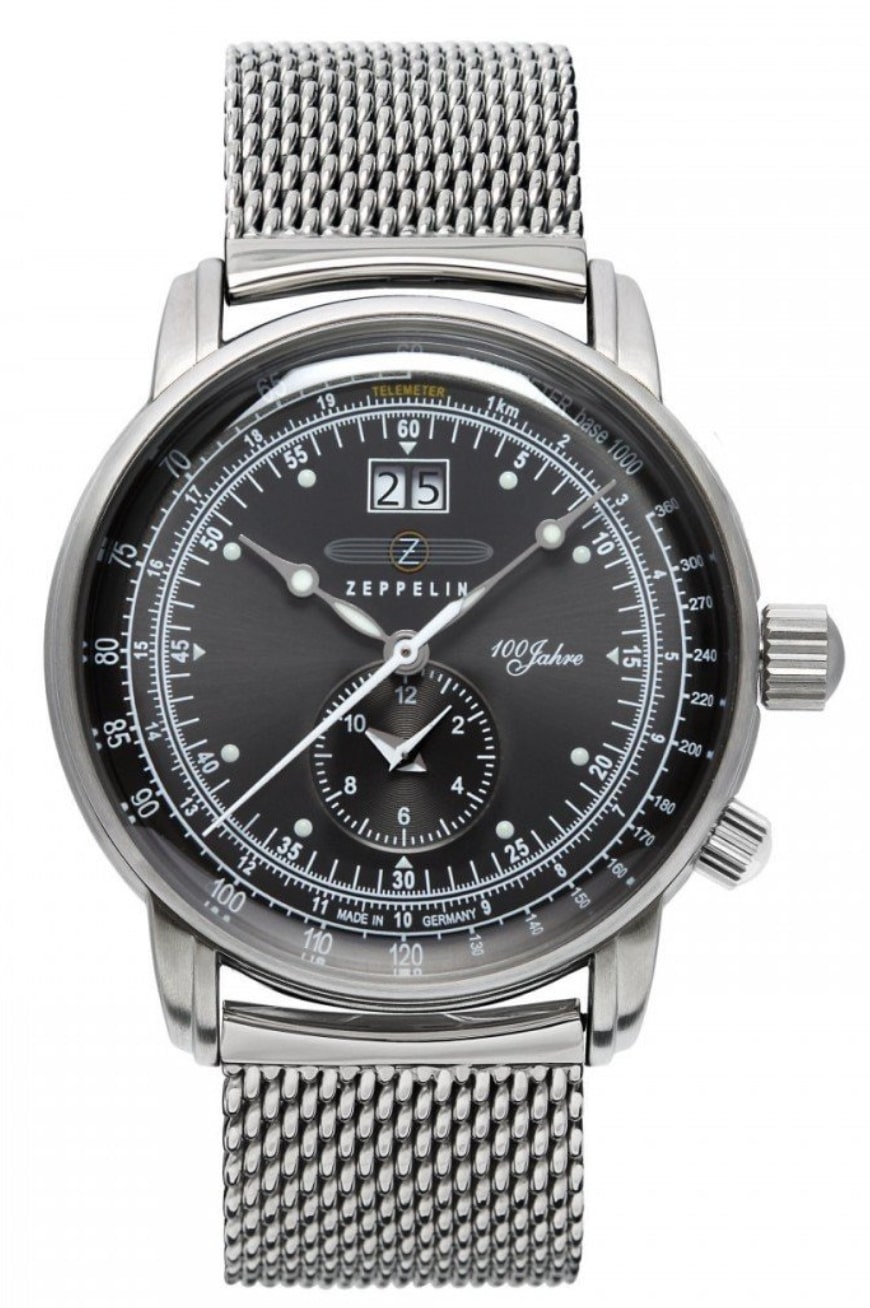
Calculating the distance requires two components – you have to see the event as well as hear it. For instance, you can measure the distance from the lightning strike or the enemy firing at you.
How to use the telemeter bezel:
1. If you see the lightning strike, start the chronograph.
2. Stop the chronograph when you hear the thunder rumbling.
3. Check the corresponding result indicated by the second hand.
11. Pulsometer Bezel
Like the telemeter, the pulsometer bezel is behind the crystal on the dial’s outer rim rather than on the case.
The pulsometer bezel comes with pulse rate markings and its purpose, surprise-surprise, is to count pulse. Another essential function typically coupled with the bezel is the chronograph that helps count the heartbeats.
What makes the pulsometer watch a better option for counting the pulse is that you don’t have to count the heartbeats in 15 seconds and then multiply the result by four – the watch indicates the result without the calculation.
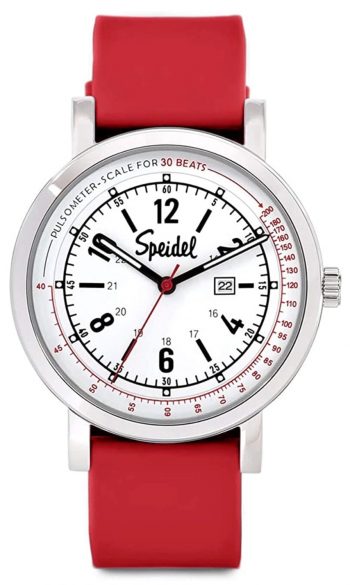
Several specialized nurse watches come with a pulsometer bezel. Also, the watches are produced by several luxury brands, such as Longines and Breitling.
How to use the pulsometer watch: Start the chronograph and count the heartbeats (depending on the watch calibration, 15 or 30 heartbeats). Stop the chronograph when 15/30 heartbeats are counted and check the pulse marking the second hand points.
12. Decimal Bezel
The last type of bezel is the decimal bezel. This bezel helps present time in percentages and decimals and is coupled with a stopwatch function.
Although for most of us, converting seconds into decimals is quite useless, there are scientists and industrial engineers who find it helpful in their studies and calculations.
Visually, the decimal bezel reminds a little of a dive bezel. However, instead of the 60-minute scale, the numbers on a decimal bezel run evenly up to 100.
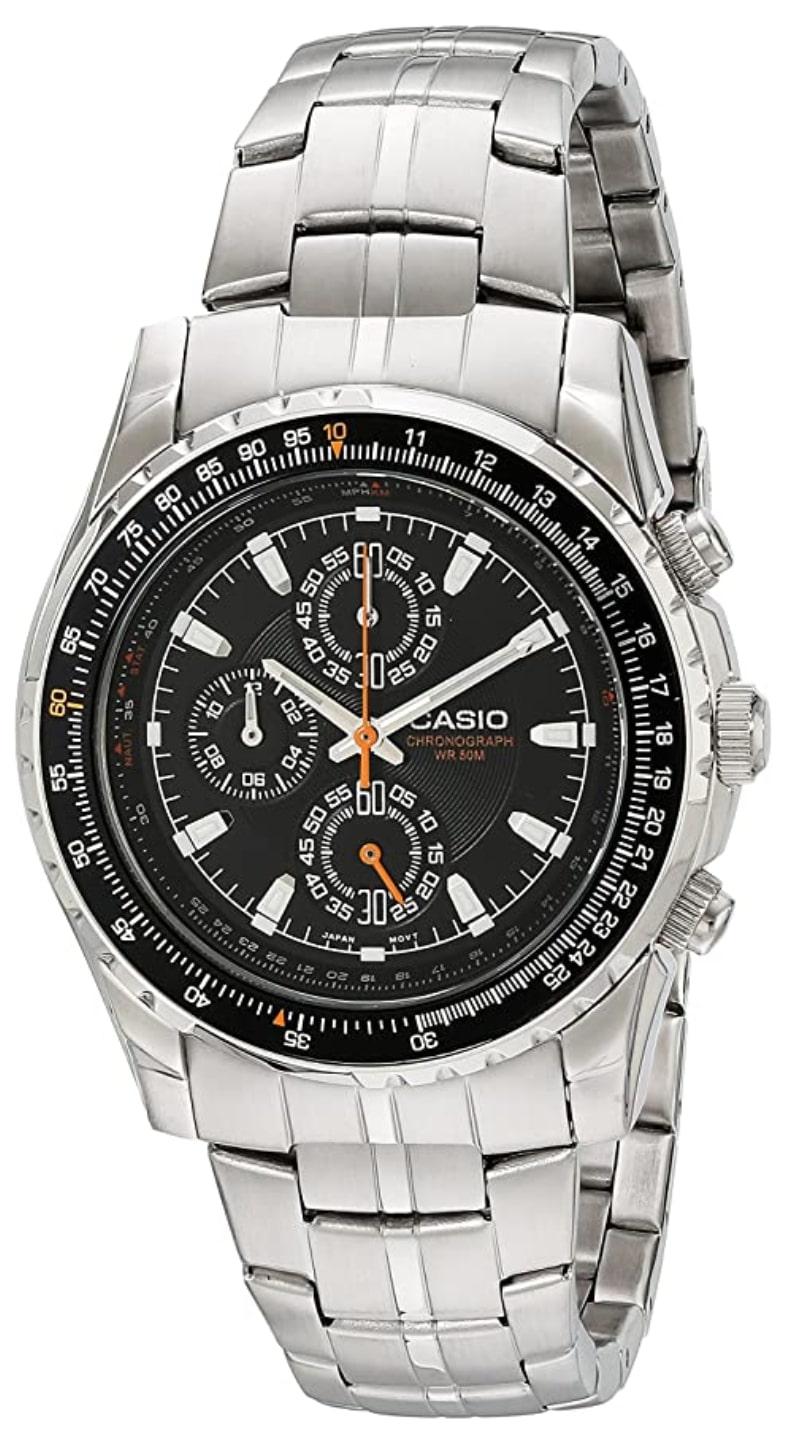
How to use the decimal bezel: Start the stopwatch and stop it when the timing of an event is finished. The result on the bezel pointed by the second hand is the corresponding decimal/percentage of the elapsed time.
For example, if the hand stopped at 45 seconds, the decimal result is 75 – that is, 45 seconds equal to 75% of the minute, or 0.75 in decimals.
Final Words
As you can see, there are several types of watch bezels available, from dive and tachymeter to GMT and pulsometer bezels. They all provide a visual enhancement to the watch, but also a practical side. However, another question is whether you’re going to actually use the functions the bezels offer.
Be that as it may, the watch bezel is nevertheless an eye-catching part of a watch that makes a timepiece more than just a simple time-tracking wearable.
You may also like:
Affiliate Disclosure: As an Amazon Associate I earn from qualifying purchases. Details
- CIGA Design Blue Planet Gilding Watch: The Best Conversation Starter Around? - April 2, 2023
- CIGA Design X-Series Review: The Most Skeleton for the Money? - July 7, 2022
- What Is A Dive Watch? A Complete Guide - May 17, 2022

